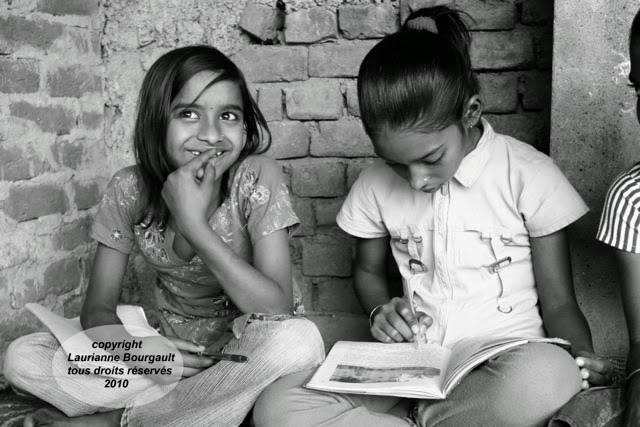The Tenth Annual Status of Education Report – ASER 2014 is out. It is once again sad reflection on the state of primary education in India. Nothing has really changed. According to the report about 25 per cent of India’s children in class 8 cannot read text prescribed for class 2, and math remains a serious challenge across classes! What is so terribly tragic is that it is not the fault of the children, but of the system that seems to be frozen in some time warp, a system that seems to have its own cover and dubious agenda. We have been working with children that come from underprivileged and disadvantaged homes and I can tell you with utmost confidence that it takes very little to get them to excel. So to me a class 8 student that cannot read a class 2 text or do a class 2 sum is absolutely shocking. For the past 15 years now our children have been doing well, often topping their class and even school. True there maybe the odd slow learner as is always the case in any society, but the majority of our children across all classes are above average.
The figures of the report are really troubling, more so in these election times when everyone is tom-tomming about grandiose plans for our capital city and for India. How cleverly politicians hide realities is frightening. If one were to believe them, all is hunky dory and we are ready to become a world class nation.
This morning I got a mail from an activist organisation. It was a copy of a letter addressed to the Chief Justice of one of our States bringing to his attention the state of education in a district of his State.
India has prided itself of its ICDS programme that was launched many decades ago to address the problems of children between the ages 0 to 5. One of the tenets of this well conceived programme were the setting up of anganwadis (creches)in every block. The letter I received this morning describes what an anganwadis looks like: The two rooms allotted to the Anganwadi serve the dual purpose of store-room and class-room/child-care centre. Lot of space in both the rooms was occupied by wheat bags. Both the rooms were dark. There was no electric connection.
Tender-aged children were sitting on a mat made of plastic rags stitched together. The surface of the same was chilling cold. Two small kids were cleaning the room with brooms in their hands in the presence of Anganwadi workers. The utensils which the children had brought for mid-day meal were unclean. One of these kids was having a school bag with him and when the same was opened, bits of a torn book were found. How can children grow and thrive!
There was more. This time about the primary school in the same village. About 200-250 children are enrolled in the two primary schools. There were no boundary wall, no electricity-connection, no chairs, no drinking water-arrangement and no toilet in either of the two primary schools. Cattle could be seen tied down in the vicinity of the school building.
Need I say more? Maybe just a small added bit of first hand information: the anganwadis in the Delhi slums are clones of the one described above.
Instead of all the grandiose blah-blah one is hearing, I would so like one candidate to say that he or she would audit all existing social problems, and there are many and each one is sound if implemented with a modicum of honesty, and ensure that they work. India would be transformed.
I know that each and every child has the potential to grow and succeed. It is for us as a society to give them the enabling environment to do so.


